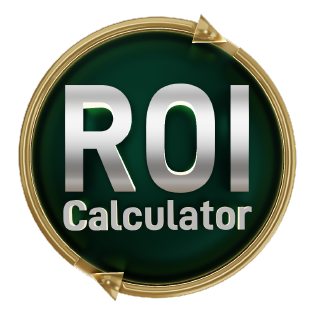Content marketing is a powerful way to attract, engage, and delight your target audience. It can help you build trust, authority, and loyalty with your potential and existing customers. But how do you create content that resonates with your audience and achieves your business goals? How do you execute your content marketing strategy effectively and efficiently?
In this blog post, we will share some best practices and tips on how to master the art of effective content marketing execution. We will cover the following aspects:
- How to plan your content marketing strategy
- How to create valuable and relevant content
- How to distribute and promote your content
- How to measure and optimize your content marketing performance
How to Plan Your Content Marketing Strategy
Embracing their brand's values in content creation has become a hot trend among 30% of marketers, ranking among the top strategies in marketing. This trend boasts the 5th highest return on investment and is anticipated to surge in 2023. But here's the key: crafting compelling content starts with a well-defined and documented content marketing strategy. This strategy acts as your guiding roadmap, steering your efforts in content creation, distribution, and promotion, paving the way for success. It helps you align your content with your audience’s needs, preferences, and pain points, as well as your business objectives, value proposition, and brand story.
A content marketing strategy should include the following elements:
- Audience personas: These are detailed profiles of your ideal customers that describe their demographics, psychographics, behaviors, challenges, goals, motivations, and content consumption habits. Audience personas help you understand who you are creating content for, what they care about, and how they make decisions.
- Brand story: This narrative communicates your brand’s identity, mission, vision, values, and personality. A brand story helps you differentiate yourself from your competitors, connect with your audience emotionally, and inspire them to take action.
- Content marketing mission: This statement summarizes why you are creating content, what value you are providing to your audience, and how you are helping them solve their problems or achieve their goals. A content marketing mission helps you focus your content on delivering value and impact.
- Business case: This document outlines the benefits and costs of investing in content marketing, as well as the expected outcomes and metrics. A business case helps you justify your content marketing budget, resources, and activities, as well as align them with your overall business goals.
- Action plan: This is a detailed plan that specifies the steps, tasks, roles, responsibilities, timelines, tools, and processes involved in executing your content marketing strategy. An action plan helps you organize your workflow, coordinate your team members, and manage your projects.

How to Create Valuable and Relevant Content
A striking 96 percent of today's marketing decision-makers have hailed content marketing as a game-changer for their brands, as revealed by Zazzle Media in 2019. This impressive figure marks a remarkable ascent of 37 percentage points from the 70 percent who shared this sentiment in 2017.
Now, once you've laid the foundation with a robust content marketing strategy, the real magic begins. With this strategy in place, you're poised to craft content that not only captivates but also resonates deeply with your audience. To create valuable and relevant content, you need to follow these steps:
Conduct keyword research:
Keyword research is the process of finding and analyzing the words and phrases that your audience uses to search for information online. Keyword research helps you identify the topics, questions, and pain points that your audience is interested in, as well as the search intent behind them. You can use tools like Semrush or Ahrefs to conduct keyword research and find relevant keywords for your content.
Choose the right content format:
Content format refers to the type and style of content you create for your audience. Content formats can include text (such as blog posts, ebooks, white papers), visuals (such as images, infographics, videos), audio (such as podcasts), interactive (such as quizzes), or a combination of them. You should choose the right content format based on your audience’s preferences, needs, and goals, as well as the purpose and message of your content.
Write engaging headlines:
Headlines are the first thing your audience sees when encountering your content. Headlines should capture their attention, spark their curiosity, and entice them to click through or read more. You should write engaging headlines that are clear, concise, specific, benefit-oriented, and keyword-rich. You can use tools like [CoSchedule Headline Analyzer] or [Sharethrough Headline Analyzer] to write better headlines for your content.
Craft compelling introductions:
Introductions are the second thing your audience sees when they read your content. Introductions should hook their interest, establish credibility, and preview what’s coming next. You should craft compelling introductions that are relevant, informative, and intriguing. You can use techniques like storytelling, statistics, quotes, questions, or anecdotes to craft compelling introductions for your content.
Provide useful information:
Information is the main body of your content. Information should provide value, answer questions, solve problems, or achieve goals for your audience. You should provide helpful information that is accurate, reliable, and up-to-date. You should also cite credible sources, use data and evidence, and avoid plagiarism when providing information for your content.
Use different content formats:
Content formats are how you present and organize your information. Content formats include headings, subheadings, bullet points, numbered lists, tables, charts, graphs, images, videos, or other visual aids. You should use different content formats to make your information more readable, scannable, and understandable for your audience. You should also use consistent formatting and styling for your content.
Include clear calls to action:
Calls to action are the last thing your audience sees when they finish reading your content. Calls to action are the instructions or requests you make to your audience to take the next step or action. You should include clear calls to action that are relevant, specific, and urgent for your audience. You should also use action verbs, colors, buttons, or other design elements to make your calls to action more visible and clickable for your audience.
How to Distribute and Promote Your Content
Content marketing is constantly evolving and adapting to the changing needs and preferences of the audience. In 2023, some of the top areas to look out for while doing content marketing are video marketing, events, owned media assets, paid media, and social media marketing. These areas have been chosen by a large share of people as their preferred content marketing tactics, according to a recent survey. However, creating valuable and relevant content is not enough. You must also distribute and promote your content to reach, attract, and engage your target audience. To do this effectively, you need to follow these steps:
Identify the most relevant channels:
Channels are the platforms or mediums you use to distribute and promote your content. Channels can include your website or blog, social media networks, email newsletters, online communities, podcasts, webinars, or other third-party websites or publications. You should identify the most relevant channels based on your audience’s preferences, behaviors, and habits, as well as the type and format of your content.
Optimize your content for each channel:
Optimization is adapting and improving your content. Optimization can include using keywords, hashtags, tags, titles, descriptions, images, videos, links, or other elements to help your content rank higher, get more visibility, and generate more traffic on each channel. You should optimize your content for each channel based on the best practices and guidelines of each platform or medium.
Schedule and automate your content marketing distribution and promotion:
Scheduling and automation are planning and executing your content distribution and promotion activities. Scheduling and automation can help you save time, resources, and effort, as well as ensure consistency and frequency of your content distribution and promotion. You should schedule and automate your content distribution and promotion using tools.
Engage with your audience:
Engagement is interacting and communicating with your audience on each channel. Engagement can include responding to comments, questions, feedback, reviews, liking, sharing, or retweeting other people’s posts, participating in discussions or conversations, or creating user-generated content or contests. You should engage with your audience to build relationships, trust, and loyalty with them, as well as encourage them to take action on your content.
How to Measure and Optimize Your Content Marketing Performance
For a significant majority—more than 60%—of marketers, the litmus test for content marketing success lies in sales figures. Yet, this is not the only yardstick in use; other metrics gaining traction to measure performance include web traffic, social engagement, and lead generation. However, the ultimate act in executing effective content marketing is meticulously measuring and optimizing your content's performance. This helps you evaluate the effectiveness and efficiency of your content marketing strategy, as well as identify the strengths, weaknesses, opportunities, and threats of your content marketing efforts.
To measure and optimize your content marketing performance, you need to follow these steps:
- Define your content marketing goals: Goals are the desired outcomes or results that you want to achieve from your content marketing strategy. Goals should be specific, measurable, achievable, relevant, and time-bound (SMART). You should define your content marketing goals based on your business objectives, value proposition, and brand story.
- Select your content marketing metrics: Metrics are the indicators or measures you use to track and evaluate your progress toward your content marketing goals. Metrics can include quantitative (traffic, leads, conversions, revenue) or qualitative (such as awareness, engagement, satisfaction, and loyalty) data. You should select your content marketing metrics based on the purpose and message of your content, as well as the stage of the customer journey it targets.
- Use tools to collect and analyze data: Tools are the software or applications you use to collect and analyze data from your content marketing metrics. Tools can help you monitor, report, and visualize your data clearly and comprehensively. You should use tools like [Google Analytics], Semrush, Ahrefs, BuzzSumo, or HubSpot to collect and analyze data from your content marketing metrics.
- Implement changes based on insights: Insights are the findings or conclusions you draw from analyzing data from your content marketing metrics. Insights can help you understand what works well and what needs improvement in your content marketing strategy. You should implement changes based on insights to improve and optimize your content marketing performance. You should also test and experiment with different content formats, channels, and strategies to find the best fit for your audience and goals.
Vajra Global - Where Vision Meets Creation
Content marketing is a powerful way to attract, engage, and delight your target audience. But to ensure content marketing execution effectively, you must master the art of planning, creating, distributing, promoting, measuring, and optimizing your content. By following the best practices and tips we shared in this blog post, you can create content that resonates with your audience and achieves your business goals. If you are looking for a digital marketing agency to help you with your content marketing strategy or execution, you have come to the right place. We are Vajra Global, a digital marketing agency specializing in creating and delivering high-quality content for our clients. We can help you turn your ideas into impact.
Contact us today, and let’s get started.

.webp?width=575&name=11%20(1).webp)
